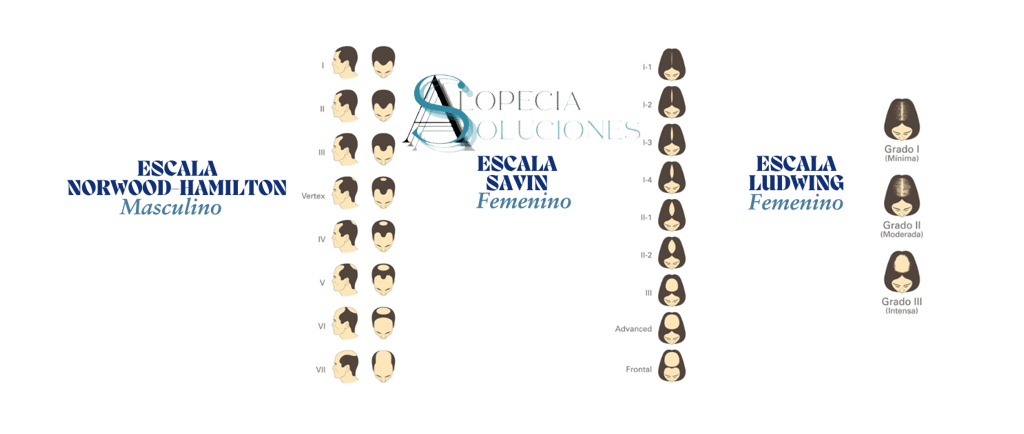Understanding Alopecia Grades: Norwood-Hamilton, Savin, and Ludwig Scales in Men and Women
Alopecia is a condition that affects millions of people worldwide, causing hair loss of varying severity. Two of the most widely recognized scales for classifying hair loss are the Norwood-Hamilton and Savin scales. It is essential to understand the different classifications, as they can influence treatment options and the personal perception of those who suffer from it.
ALOPECIA
Alopecia Soluciones
2/15/20252 min read


Alopecia Grades
Alopecia is a condition that affects millions of people worldwide, causing hair loss of varying severity. Two of the most recognized scales for classifying hair loss are the Norwood-Hamilton and Savin scales. It is essential to understand the different classifications, as they can influence treatment options and the personal perception of those who suffer from it.
Norwood-Hamilton Scale
The Norwood-Hamilton Scale is predominantly used by men to classify hair loss patterns. This scale ranges from Grade I, which represents a normal hairline, to Grade VII, where there is significant loss in the frontal area and crown. As you progress up the scale, the location and amount of hair loss become increasingly pronounced.
Grades II and III are often the most concerning for those experiencing them, as they mark the visible onset of alopecia. The Norwood-Hamilton Scale not only provides a guide for men but also serves as a basis for physicians to evaluate the most appropriate treatment methods.
Savin Scale and Its Application in Women
Unlike the Norwood-Hamilton scale, the Savin Scale is specifically for women and focuses on hair thinning, rather than hair loss. This scale also ranges in grades, from Grade I to Grade V, with Grade I indicating minimal hair loss and Grade V indicating noticeable hair loss.
Female pattern alopecia often requires a different approach in terms of treatment, as the pattern of hair loss tends to be more diffuse. Many women may experience a decrease in hair thickness without a receding hairline, making the Savin Scale essential for an accurate assessment.
The Ludwig Scale and Its Relevance
Finally, the Ludwig scale is another relevant assessment tool, also applicable to women. This scale is divided into three grades, with grade I indicating mild worsening, while grade III represents significant hair loss. The Ludwig scale is particularly useful for clinicians because it provides a clear framework for differentiating between different types of hair loss.
In summary, the Norwood-Hamilton, Savin, and Ludwig scales are valuable tools in understanding and diagnosing alopecia in both men and women. Knowing the classification of the problem is the first step in seeking appropriate treatment. Proper and timely care can make a difference in the self-esteem and quality of life of people suffering from this condition.
Connection
We connect patients with effective hair clinics.
Servicios
Citas
© 2025. All rights reserved.
